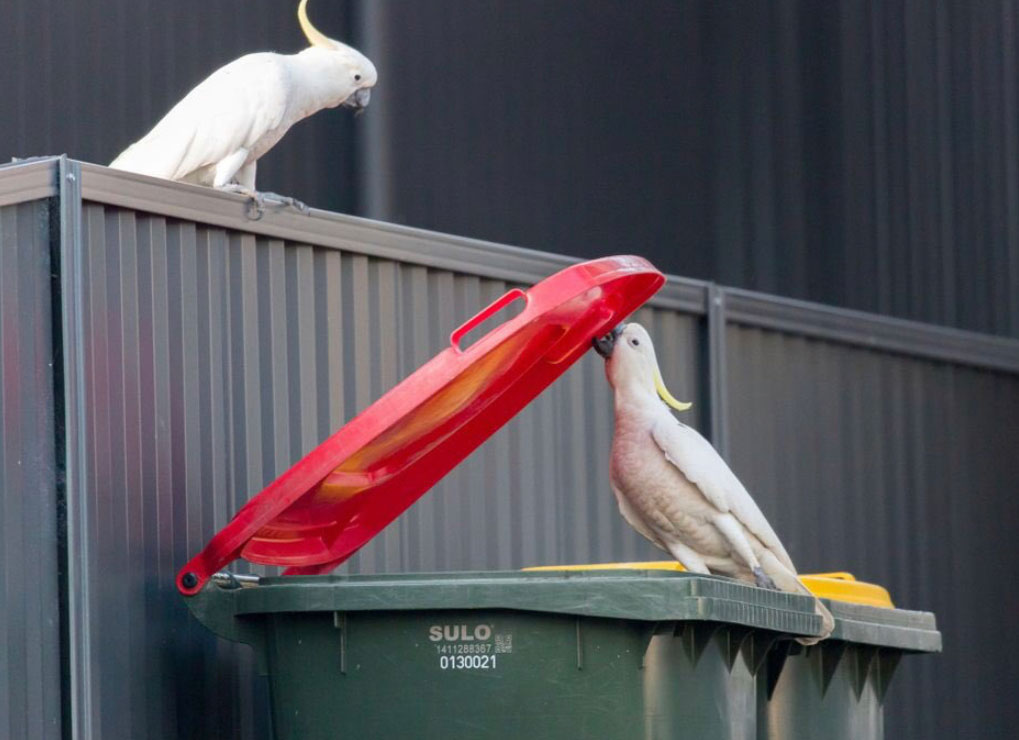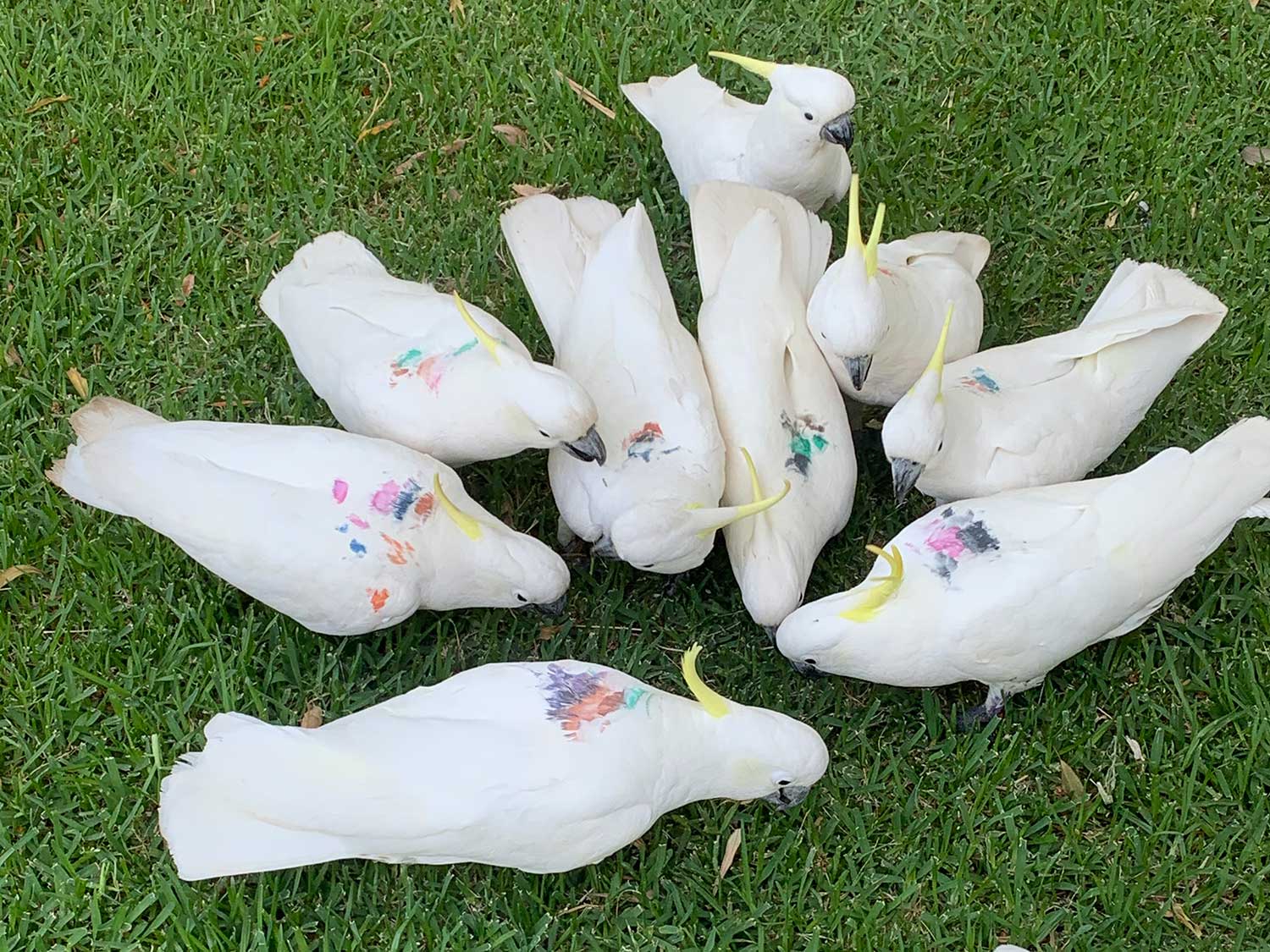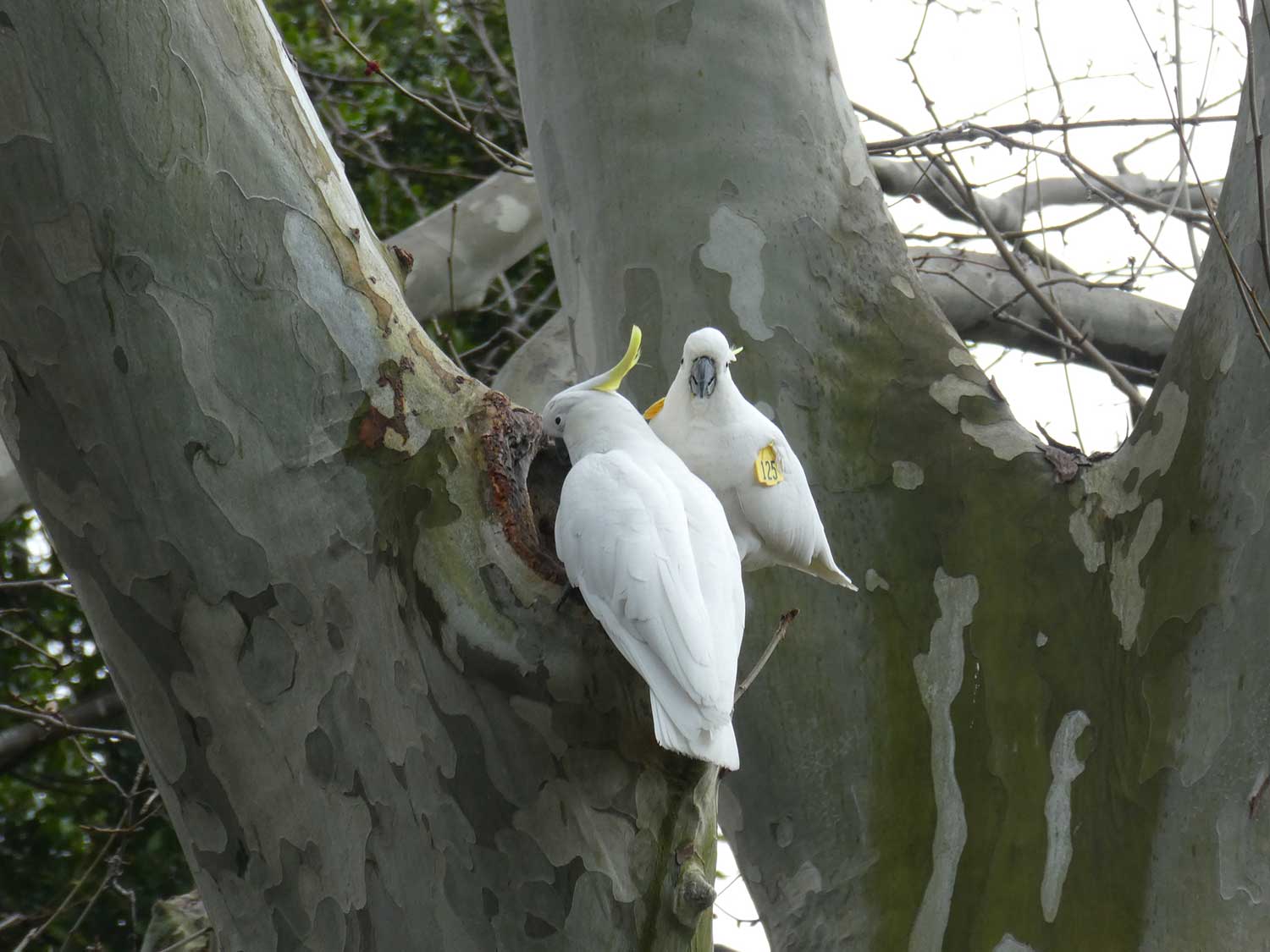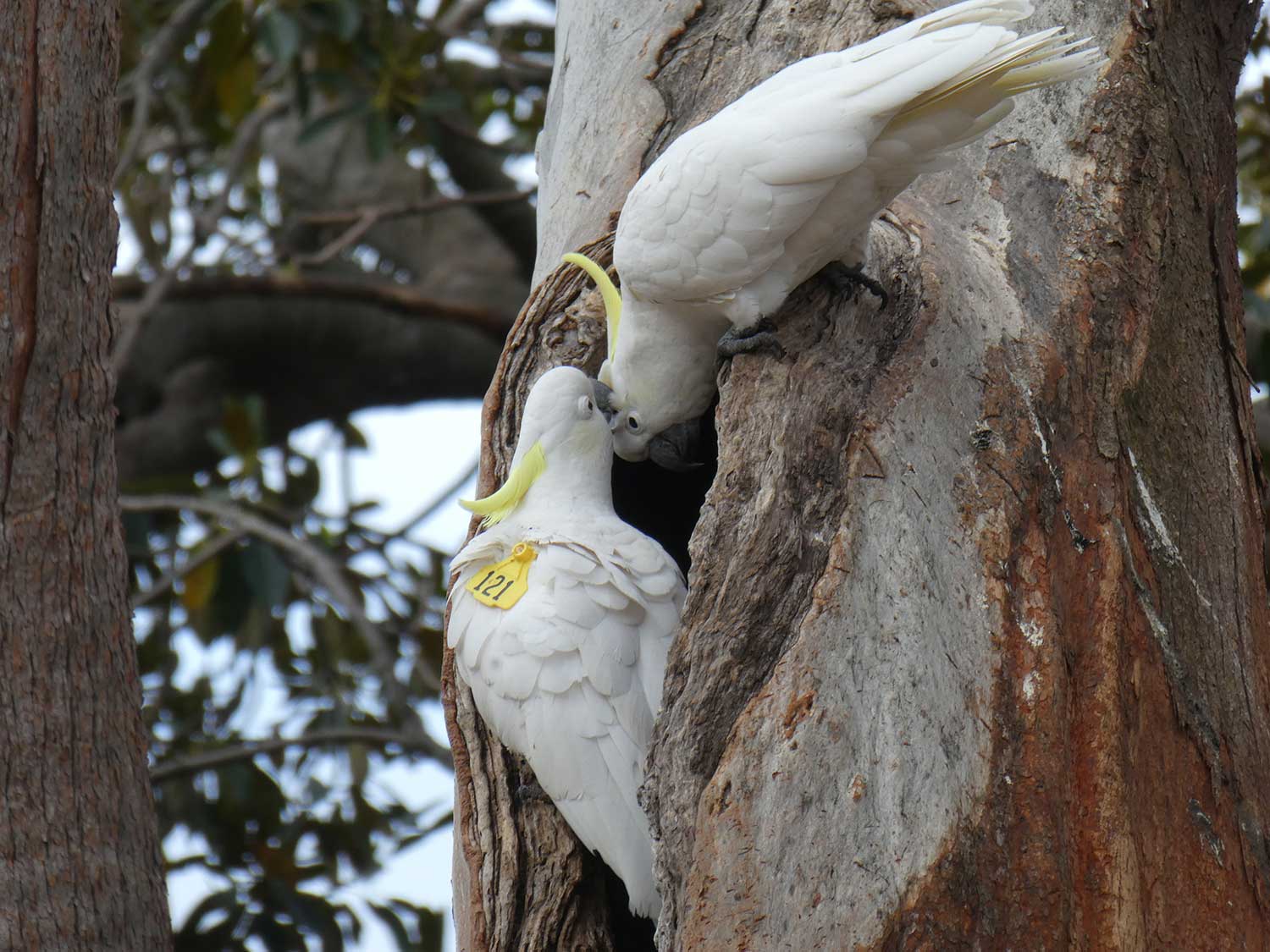About the project
The Clever Cockie project is part of the larger Big City Birds project.
Sulphur-crested Cockatoos (Cacatua galerita) are a highly social, cognitive complex species that are also successful urban adapters, showing a range of innovative behaviours that facilitate city living. This project studies the cognitive ecology of a marked population of cockatoos, led by Dr. Lucy Aplin through the Cognitive and Cultural Ecology Lab. We have two aims: first, to characterise vocalisations and learnt foraging behaviour within and between subpopulations, and second, to investigate potential social-cognitive mechanisms promoting urban invasion and adaptation.
We encourage everyone who encounters a marked Cockie to report their sighting - even if it's the same bird day after day, we are interested! This information helps us learn about individual bird's behaviour and that of the population. Report using the Bird City Birds app for tagged or painted birds, nest hollows, nocturnal roosts, and all the behaviours you observe: see links below.
The Wingtags Project
The method of wing-tagging allows all of us to identify and learn about individuals birds, generally over multiple years unless the birds remove the tags. This longer-term data compliments the short-term data collected by temporarily marking cockatoos with colour combinations. Our research is based in the Sydney region, Australia. Our aim is to learn about the Sulphur-crested Cockatoo, Australian White Ibis and Australian Brush-turkey behaviours such as: site-loyalty, population size and foraging, roosting and breeding habitat preferences.
Bin-opening Survey
Help us learn about cockatoo bin-opening: whether you "have" or "have not" observed this behaviour is valuable to our study, so please participate: https://tinyurl.com/y8a5xpl6




FAQs
Why are you tagging wildlife?
We are tagging and tracking wildlife to find out how they are adapting to living in the city. Wing-tagging allows the assessment of populations and individuals behaviour; site-loyalty, population size and foraging, roosting and breeding habitat preferences.
What are the birds' names?
All of the study birds (and their names) can be seen here.
How are the tags attached to the birds?
The wingtags are permanently attached through the birds’ patagium, a section of flexible skin that expands and contracts with the opening and closing of the wing. It’s similar to the loose bit of skin on the inside of your elbow. This method of marking birds with plastic cattle tags as wingtags was first used in the 1970’s on vultures.
How long will the tags remain attached?
Wingtags is a long term project. The tags will remain on the birds until they fall off or the tagged bird removes them. Collecting long-term data is necessary as wildlife population are subject to natural variations and long term changes that can only be measured by monitoring populations over years.
Does tagging hurt the birds?
The process is similar to a human getting a skin piercing. The tagging process is quick, and we aim to minimise the distress of the birds. After tagging the birds are closely monitored and we release them within half an hour of being caught. Tagged wildlife tend to initially inspect the tag, but quickly adjust to flying and preening as normal.
Have the birds suffered any injuries or adverse effects from the tags?
No, to the best of our knowledge. We know that all of the wing-tagged birds have been resighted, and the majority are regularly resighted. We have received reports of a couple of birds with minor injuries, but they have all subsequently been observed and are in good health.
I've seen a sick Cockatoo that is losing its feathers and/or has a deformed beak.
The Cockie probably has Beak and Feather Disease (Psittacine Circoviral Disease). It’s a naturally occurring virus that, unfortunately, is often fatal. There is no widely-available vaccine.
I've found a bird with an injury. Should I take it to a vet?
Both the tagged and untagged birds are wild animals and injuries and illnesses naturally occur. Small injuries that look like they will heal probably will heal. If you see an injured bird that clearly has its welfare compromised or is obviously in distress, you should call the appropriate wildlife rescue group for your area (e.g. in Sydney WIRES or SMWS). We do not recommend you try to catch cockatoos yourself, they have a very powerful beak and being bitten can cause a serious injury.
I have some veterinary questions?
We are ecologists not vets and we cannot offer veterinary advice. Please contact your local vet for any veterinary matters.
Can I feed the birds?
We discourage people from feeding wild animals, although we acknowledge that lots of people feed wild animals - including the wing-tagged Cockies. If you are feeding wild animals, be aware that many foods are not appropriate for them, including pet food. Where possible, provide ‘natural’ foods, or plant them in your garden. More information can be found at Birds In Backyards and Environment NSW.